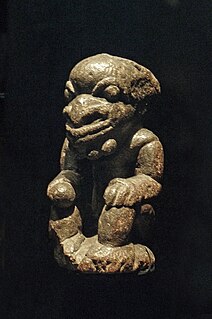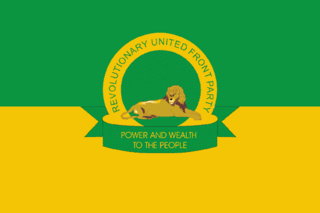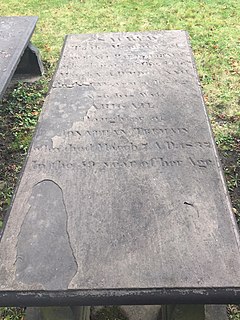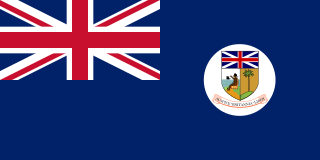 W
WThe Armed Forces Revolutionary Council (AFRC) was a group of Sierra Leone soldiers that allied itself with the rebel Revolutionary United Front in the late 1990s. While the AFRC briefly controlled the country in 1998, it was driven from the capital by a coalition of West African troops. It was no longer a coherent and effective organization by the elections of 2002.
 W
WA Black Loyalist was a person of African descent who sided with the Loyalists during the American Revolutionary War. In particular, the term refers to men who escaped the enslavement of Patriot masters and served on the Loyalist side because of the Crown's promises of freedom.
 W
WBritish West Africa was the collective name for British colonies in West Africa during the colonial period, either in the general geographical sense or the formal colonial administrative entity. The United Kingdom held varying parts of these territories or the whole throughout the 19th century. From west to east, the colonies became the independent countries of The Gambia, Sierra Leone, Ghana and Nigeria. Until independence, Ghana was referred to as the Gold Coast.
 W
WJoseph Cinqué or Cinquez, also known as Sengbe Pieh and sometimes referred to mononymously as Cinqué, was a West African man of the Mende people who led a revolt of many Africans on the Spanish slave ship La Amistad. After the ship was taken into custody by the United States Revenue Cutter Service, Cinqué and his fellow Africans were eventually tried for mutiny and killing officers on the ship, in a case known as United States v. The Amistad. This reached the U.S. Supreme Court, where Cinqué and his fellow Africans were found to have rightfully defended themselves from being enslaved through the illegal Atlantic slave trade and were released. Americans helped raise money for the return of 35 of the survivors to Sierra Leone.
 W
WLieutenant John Clarkson (1764–1828) was a Royal Navy officer and abolitionist, the younger brother of Thomas Clarkson, one of the central figures in the abolition of slavery in England and the British Empire at the close of the 18th century. As agent for the Sierra Leone Company, Lieutenant Clarkson was instrumental in the founding of Freetown, today Sierra Leone’s capital city, as a haven for chiefly formerly enslaved African-Americans first relocated to Nova Scotia by the British military authorities following the American Revolutionary War.
 W
WThomas Clarkson was an English abolitionist, and a leading campaigner against the slave trade in the British Empire. He helped found The Society for Effecting the Abolition of the Slave Trade and helped achieve passage of the Slave Trade Act of 1807, which ended British trade in slaves.
 W
WCline Town is an area in Freetown, Sierra Leone. The area is named for Emmanuel Kline, a Hausa Liberated African who bought substantial property in the area. The neighborhood is in the vicinity of Granville Town, a settlement established in 1787 and re-established in 1789 prior to the founding of the Freetown settlement on 11 March 1792.
 W
WThe Cotton Tree is a Ceiba pentandra, also known commonly as a kapok tree, a historic symbol of Freetown, the capital city of Sierra Leone. According to legend, the "Cotton Tree" gained importance in 1792 when a group of former African American slaves, who had gained their freedom by fighting for the British during the American War of Independence, settled the site of modern Freetown. These Black Loyalist settlers, called "Nova Scotians" because they came from Nova Scotia after leaving the United States and before they decided to go back to Africa or, "Navatians" in Sierra Leone, founded Freetown on March 11th 1792.
 W
WIn April 1961, Sierra Leone became politically independent of Great Britain. It retained a parliamentary system of government and was a member of the British Commonwealth of Nations. The Sierra Leone People's Party (SLPP), led by Sir Milton Margai were victorious in the first general election under universal adult franchise in May 1962. Upon Sir Milton's death in 1964, his half-brother, Sir Albert Margai, succeeded him as Prime Minister. Sir Albert attempted to establish a one-party state had the ready cooperation of the opposition All People' Congress but met fierce resistance from some cadre within his party Sierra Leone People's Party (SLPP) and ultimately abandoned the idea.
 W
WThe King's Yard was a facility developed in Freetown, Sierra Leone, in which newly liberated Africans were taken after being dropped off in the colony from ships captured by the West Africa Squadron. This fleet had established by the Royal Navy in 1808 as part of the suppression of the slave trade. Parliament passed the Slave Trade Act of 1807, which led to the blockade of Africa. Although initially limited to British ships, it was extended through a series of treaties to encompass other ships under the jurisdiction of Portugal, Spain and the Netherlands. In the King's Yard the slaves were processed and given medical treatment, leading to the yard being referred to as an asylum.
 W
WThe Legislative Council of Sierra Leone was the official executive body that governed the Crown Colony of Sierra Leone. The Members of the Colonial Council were accorded the title of 'Honorable' and were responsible for decision-making in the Colony of Sierra Leone.
 W
WThe Leopard Society, also known as Ekpe or Mgbe, was the oldest of the Cross River secret societies in West Africa and known as Anyoto or Aniota in Central Africa. It was all-male, most likely originating as a warrior society, and assumed importance during the Atlantic slave trade, which was centered in Calabar and dominated by the Efik people by the late 1700s. The trade brought wealth and a range of imported products into Calabar. The Efik, seeking to augment this wealth, also sold memberships in the society to other groups, enabling it to spread widely through the area.
 W
WThis is a list of heads of government of Sierra Leone, from the establishment of the office of Chief Minister in 1954 until the present day. The office of Prime Minister was abolished after the constitutional referendum in 1978, and reinstated in 2018 with the appointment of David J. Francis as Chief Minister.
 W
WThe Lomé Peace Agreement was a peace agreement signed on 7 July 1999 between the warring parties in the civil war that gripped Sierra Leone for almost a decade. President Ahmad Tejan Kabbah signed with the Revolutionary United Front (RUF) leader, Foday Sankoh and granted Sankoh a position in the transitional government as well as amnesty for him and all combatants. The accord is named for Lomé, the capital of Togo, where the negotiations took place and the agreement was signed.
 W
WThe Mano River Union (MRU) is an international association initially established between Liberia and Sierra Leone by the 3 October 1971 Mano River Declaration. It is named for the Mano River which begins in the Guinea highlands and forms a border between Liberia and Sierra Leone. On 25 October 1980, Guinea joined the union.
 W
WJohn Meheux was a Creole colonial official who served as Sheriff of the Colony of Sierra Leone. Meheux was born to a Temne mother and Jean Meheux, a French merchant and trader. Meheux inherited extensive properties from his father in Kissy Road and Kissy Street. Meheux Street in Freetown, Sierra Leone commemorates the Meheux family.
 W
WThe Memory of Love is a 2010 novel by Aminatta Forna about the experiences of three men in Sierra Leone.
 W
WA Nomoli is a carved stone figurine native to Sierra Leone and Liberia. They are usually made of soapstone, limestone or granite.
 W
WThe president of the Republic of Sierra Leone is the head of state and the head of government of Sierra Leone, as well as the commander-in-chief of the Armed Forces.
 W
WElizabeth II was Queen of Sierra Leone from 1961 to 1971, when Sierra Leone was an independent constitutional monarchy. The Queen was also monarch of the other Commonwealth realms, including the United Kingdom.
 W
WThe Sierra Leone Government Railway operated in Sierra Leone from 1897 to 1974. It was unusual in that it formed a national railway system constructed solely to a 2 ft 6 in narrow gauge, whereas in other countries gauge of such a narrow width was usually confined to feeder railways.
 W
WThe Revolutionary United Front (RUF) was a rebel army that fought a failed eleven-year war in Sierra Leone, starting in 1991 and ending in 2002. It later developed into a political party, which still exists today. The three most senior surviving leaders, Issa Sesay, Morris Kallon and Augustine Gbao, were convicted in February 2009 of war crimes and crimes against humanity.
 W
WSandline International was a private military company (PMC) based in London, established in the early 1990s. It was involved in conflicts in Papua New Guinea in 1997 and had a contract with the government under then-Prime Minister Julius Chan, causing the Sandline affair. In 1998 in Sierra Leone Sandline had a contract with ousted President Kabbah and in Liberia in 2003 was involved in a rebel attempt to evict the then-president Charles Taylor near the end of the civil war. Sandline ceased all operations on 16 April 2004.
 W
WThe Nova Scotian Settlers, or Sierra Leone Settlers were African-Americans who founded the settlement of Freetown, Sierra Leone and the Colony of Sierra Leone, on March 11, 1792. The majority of these black American immigrants were among 3000 African-Americans, mostly former slaves, who had sought freedom and refuge with the British during the American Revolutionary War, leaving rebel masters. They became known as the Black Loyalists. The Nova Scotian settlers were jointly led by African-American Thomas Peters, a former soldier, and English abolitionist John Clarkson. For most of the 19th century, the Settlers resided in Settler Town and remained a distinct ethnic group within the Freetown territory, tending to marry among themselves and with Europeans in the colony. Indigenous tribes in the region included the Sherbro and Mende.
 W
WGranville Sharp was one of the first British campaigners for the abolition of the slave trade. He also involved himself in trying to correct other social injustices. Sharp formulated the plan to settle black people in Sierra Leone, and founded the St George's Bay Company, a forerunner of the Sierra Leone Company. His efforts led to both the founding of the Province of Freedom, and later on Freetown, Sierra Leone, and so he is considered to be one of the founding fathers of Sierra Leone. He was also a biblical scholar, a classicist, and a talented musician.
 W
WSierra Leone was a sovereign state with Queen Elizabeth II as its head of state between independence on 27 April 1961 and becoming the Republic of Sierra Leone on 19 April 1971.
 W
WThe Sierra Leone Colony and Protectorate was the British colonial administration in Sierra Leone from 1808 to 1961, part of the British Empire from the abolitionism era until the decolonisation era. The Crown colony, which included the area surrounding Freetown, was established in 1808. The protectorate was established in 1896 and included the interior of what is today known as Sierra Leone.
 W
WThe Sierra Leone Government Railway operated in Sierra Leone from 1897 to 1974. It was unusual in that it formed a national railway system constructed solely to a 2 ft 6 in narrow gauge, whereas in other countries gauge of such a narrow width was usually confined to feeder railways.
 W
WSierra Leone remained a British colony throughout World War II. As such, it fought alongside the Allies against the Axis. No large scale battles or military action took place in or around Sierra Leone during the war. However, the colony played a critical role in supporting the Allies throughout the conflict, with Freetown acting as an important convoy station.
 W
WThe United Nations Mission in Sierra Leone (UNAMSIL) was a United Nations peacekeeping operation in Sierra Leone from 1999 to 2006. It was created by the United Nations Security Council in October 1999 to help with the implementation of the Lomé Peace Accord, an agreement intended to end the Sierra Leonean civil war. UNAMSIL expanded in size several times in 2000 and 2001. It concluded its mandate at the end of 2005, the Security Council having declared that its mission was complete.
 W
WThe United Nations Observer Mission in Sierra Leone (UNOMSIL) was a United Nations peacekeeping operation in Sierra Leone from 1998 to 1999 that was established with the passage of United Nations Security Council Resolution 1181. Its mission was to monitor the military and security situation in Sierra Leone. The mission was terminated in October 1999, when the Security Council authorized deployment of a new, and significantly larger peacekeeping operation, the Nations Mission in Sierra Leone (UNAMSIL).
 W
WVenuses from Kangari Hills are statuettes of women and other artifacts made of water buffalos’ tusks. They were found in Kangari Hills caves in Sierra Leone. The artifacts date back to the Middle Paleolithic period, more specifically to 45,000 BC. According to available information, the figures are the oldest known artifacts in Africa.